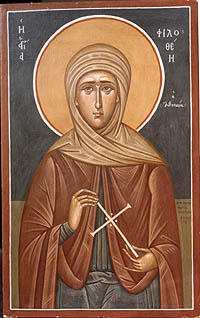The Greek Orthodox under the Ottoman Turks
During the 16th century, life for the Orthodox under the Ottoman Turks became more difficult. For example, in 1520 Sultan Selim I threatened to annex all the churches. In 1586, Sultan Murad III arbitrarily annexed the Church of the Pammacaristos that served as the headquarters for the Patriarch in Constantinople. In humiliation, the Patriarch was given the use of a small church owned by the Patriarchate of Alexandria.
In 1601 the Patriarch was allowed to rebuild the Church of Saint George in the heart of the Phanar district of Constantinople. This church has remained the seat of the Patriarch of Constantinople to this day.
As early as 1466 an aspirant to the patriarchal throne offered the sultan a large bribe to make him the new patriarch. From then on the patriarchal office increasingly became the object of bribery, as well as intrigue among various factions vying for power within the Christian community. Interference in the life of the Church also came from Protestant and Roman Catholic ambassadors and chaplains attached to diplomatic missions in Constantinople.

Accounts of some twenty martyrdoms have come down to us from this century. The most famous of these martyrs is Saint Philothei of Athens, who was born into the wealthy and illustrious Venizelos family in Athens in 1522. After enduring with Christ-like patience and grace a very difficult marriage and being left a widow at the age of nineteen, she became a nun. Some years later, in response to seeing Saint Andrew the First-Called Apostle in a vision, she built two women’s monasteries dedicated to him. She had a hospital built in connection with one of these monasteries, as well as a hostel for the poor. She also gave shelter to a number of women who had been taken captive by Muslims from various parts of the Empire. Irate Muslims stormed into her monastery one day and beat her severely. Eventually, in 1589, she died from the wounds she received that day.
